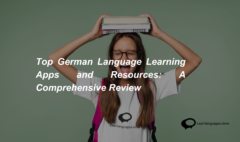A brief overview of Traditional German Clothing
A brief overview of Traditional German Clothing
Germany’s centuries-old traditional attire varies widely by area. Tracht in German refers to traditional, historical, regional fashion, including clothing, hairstyles, accessories, and symbols.
Clothing carries messages. Wear reflects our identity and values. They could provide details about our background or profession. They could give us a feeling of cultural identity. Both for ourselves and for our ancestors, they are true.
Did your ancestors originate in Germany or other German-speaking nations? Learn more about the traditional German attire that your ancestors might have worn by reading on.
Tracht refers to clothing worn in original German, representing membership in a specific group, such as officials, laborers, guilds, or regions, as work attire.
Trachten signified class, religion, ethnicity, or professional group membership nationwide. The dress code forbade farmers from dressing like aristocracy, and Germans dressed a certain way to set themselves apart from the French. However, traditional attire in Germany used to emphasize distinctions as much as belonging.
In the 18th century, traditional attire became folklore in an effort to foster a sense of national identity among Germans. 18th century uniform workwear evolved into festive attire, simple yet elegant.
Traditional German clothing
Men’s Clothing: Lederhosen
Traditional male Bavarian costume includes leather pants, shirt, knit stockings, shoes, hat, and accessories.
Lederhosen come in a variety of lengths, including short, knickerbocker-style, and ankle-length. Wear over shirt with H-shaped braces and deer horn buttons.

The outfit first appeared in the mountains of Bavaria, then it migrated to the plains. There are at least six main regional varieties, with a number of supplementary minor variations and regional styles.
You must understand German culture, traditions, and attire in addition to learning the language if you wish to speak it well.
Women’s Clothing: the Dirndl
There are numerous varieties of the dirndl, a traditional women’s dress that originated in the Alpine area of Bavaria. Austria, Liechtenstein, Switzerland, and Italy are other Alpine nations with regional variances and customs.

A Dirndl is a classic dress with a deep round or rectangular neckline and a fitted bodice.Apron with wide skirt, high waist, and various lengths. There are inexpensive and simple designs, as well as regional and general versions.
Schuhplattler: Dancing in Dirndl and Lederhosen
Lederhosen and dirndl-clad dancers perform the Schuhplattler, a classic Bavarian folk dance.
The male performers stomp their feet, slap the bottoms of their shoes, as well as their thighs and knees, to produce a distinctive sound. With their vibrant clothes and beautiful motions, the women twirl about to provide a counterpoint.

Headwear
Women’s hats can be plain or elaborate. One of the more striking hats is the Bollenhut, which has its roots in the Black Forest. It has pompoms on top and a wide brim. The pompoms are red for single women and black for married women.
Goldhaube, a classy golden hat with sequins, embroidery, and other details, or Tyrolean hat with animal hair tufts, is a classic tracht hat for men.
Hesse
Germany’s oldest Trachten can be found in Hesse, despite the fact that they are rarely worn today. Traditional black attire with colorful trimmings was worn by women. The region’s traditional attire rapidly evolved as the French populated the area, despite a 1772 dress rule that required all apparel to be fashioned from local materials.
Concluding thoughts
It can be easier to get along with German culture and its people if you are familiar with German clothes and traditions, such as how to say Merry Christmas in German. Never pass up the chance to become fully absorbed in this fascinating culture.
You can also pick up some fundamental German phrases, like how to order a drink. Your trip to Germany will be more exciting and memorable as a result.

Learn Languages Store
Vashi,
Email: services@learnlanguages.store










